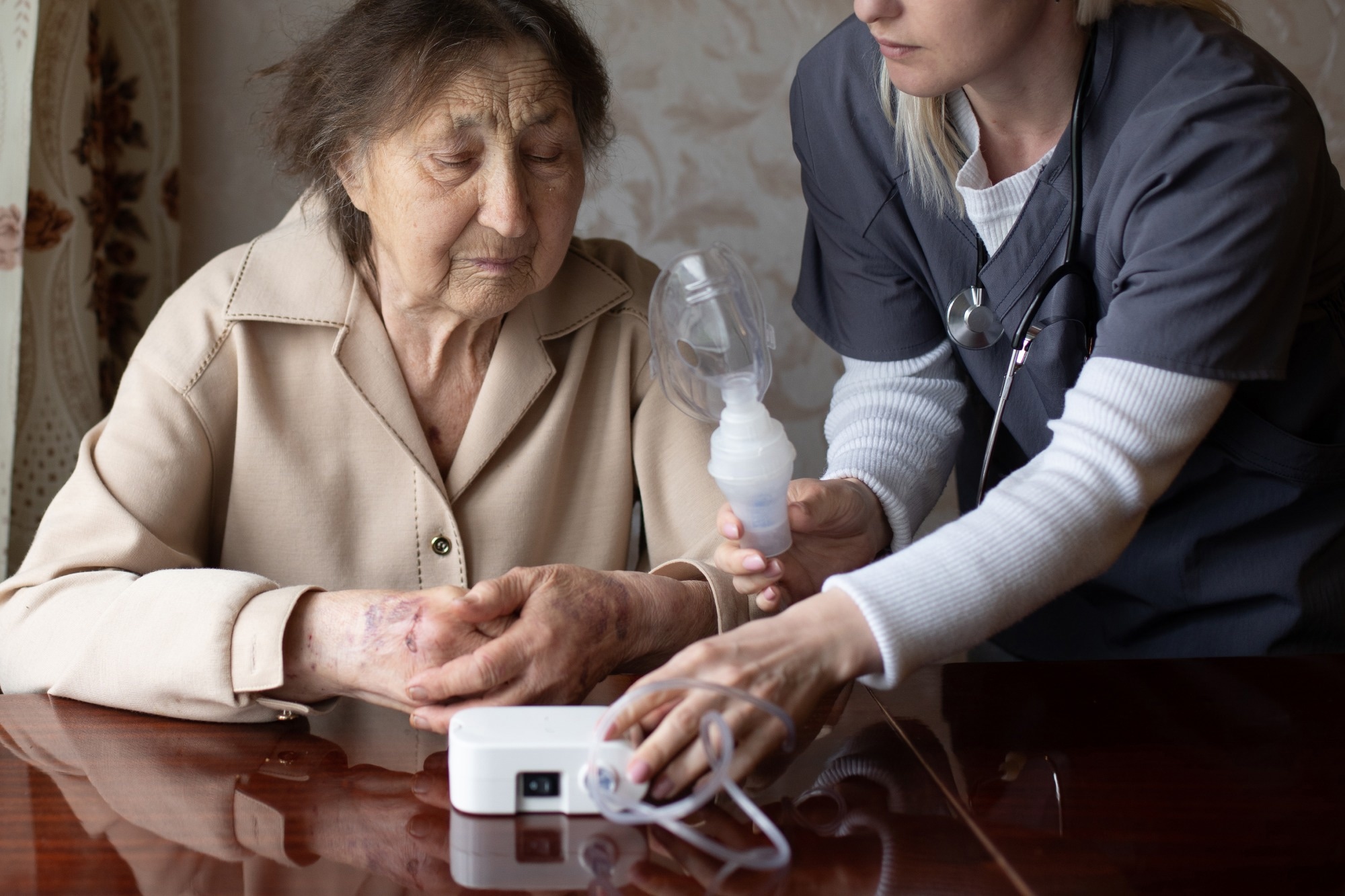Chronic obstructive pulmonary disease (COPD) is the third-leading cause of morbidity and mortality worldwide. In 2019, over 328 million people were diagnosed with COPD.
Pulmonary rehabilitation (PR) through regular exercise is a successful intervention for COPD patients.
Typically, the exercise prescription provided to COPD patients exceeds their exercising capacity. Hence, there is a need to establish a scientific respiratory rehabilitation/exercise prescription system that will benefit them.
A recent study posted to the Research Square preprint* server focused on different perspectives of respiratory care professionals to better understand the requirements for long-term PR for COPD patients.
 Study: Understanding Long-term Requirements in Pulmonary Rehabilitation for COPD: Insights from Interviews with Respiratory Care Professionals. Image Credit: Andrew Angelov/Shutterstock.com
Study: Understanding Long-term Requirements in Pulmonary Rehabilitation for COPD: Insights from Interviews with Respiratory Care Professionals. Image Credit: Andrew Angelov/Shutterstock.com

 *Important notice: Research Square publishes preliminary scientific reports that are not peer-reviewed and, therefore, should not be regarded as conclusive, guide clinical practice/health-related behavior, or treated as established information.
*Important notice: Research Square publishes preliminary scientific reports that are not peer-reviewed and, therefore, should not be regarded as conclusive, guide clinical practice/health-related behavior, or treated as established information.
Background
Physical activity is strongly connected with lung function. Lower physical activity levels lead to poor quality of life and enhance the risks of premature death.
Since COPD is a clinically complex disease, scientists have not been able to develop general guidelines for all patients.
Every COPD patient is different concerning medical needs and treatments. Therefore, based on the patient’s requirement, physicians must recommend suitable exercise levels and intensity to benefit them.
PR comprises diagnosis, training, and evaluation of COPD. As stated above, this is a low-cost and high-impact intervention that effectively lowers the progression of COPD. At present, the majority of exercise prescriptions available on the market are only suitable for patients who are stable and in healthy condition.
Although regular exercise is recommended for COPD patients, their exercise capacity is significantly compromised due to physical discomfort or respiratory difficulties (e.g., chronic cough and dyspnea).
About the Study
A qualitative research design was employed in this study, which is based on semi-structured interviews regarding PR. Here, clinical professionals were interviewed with open-ended questions to understand their perspectives regarding long-term PR for COPD patients.
Twenty-four respiratory care professionals (RCPs), including fourteen females and ten males, between the ages of 35 and 65, were recruited.
Ten worked at Chang Gung Medical Foundation, a major metropolitan hospital providing inpatient and outpatient rehabilitation services.
Another ten interviewees had private practices in rural areas, and 4 RCPs worked in regional local hospitals. The clinical experiences of the interviewees could help develop proper interventions for COPD patients.
Before the interview, each interviewee received a questionnaire outline. Each interview lasted 60 to 90 minutes, was recorded using a voice recorder, and was transcribed later. Other reviewers validated these transcriptions.
Study Findings
RCPs recruited in this study had over seventeen years of experience in chest medicine, respiratory therapy, and/or pulmonary/cardiac rehabilitation.
These interviews indicated the importance of utilizing technologies to address the needs of discharged COPD patients. These technologies can help monitor patients regularly and help establish proper care and home-based respiratory management.
Notably, this study revealed that clinical practitioners know individual differences in exercise prescriptions. The significance of an optimized exercise prescription formulated using high-tech assistance was pointed out by RCPs.
They further indicated the lack of adherence to the prescribed exercise without physician support. Therefore, it is important to understand the long-term behavior in physical activity and the motivation behind exercise adherence for optimal designing of exercise programs.
Severe issues, such as lack of necessary equipment, unpredictable environmental conditions, and different living conditions, limit remote monitoring and management of COPD patients. For instance, oxygen-producing machines can only be deployed in hospitals as they are extremely expensive and heavy and require RCPs to control the oxygen volume.
One of the main challenges RCPs highlighted regarding using this machine for COPD patients is that not all hospitals are equipped with such facilities. In addition, not all medical units can afford cardiopulmonary exercise test (CPET) equipment, making it difficult for physicians to assess patients.
Compared to individual exercise, combining exercises to improve muscle strength and inspiratory muscle endurance was beneficial for COPD patients. There is a need for a more collaborative and specialized care system where patients can be triaged and referred per the recommendations of medical professionals.
The stationary bicycle is considered the best and safest option for a COPD patient discharged from the hospital. The sensors present in a stationary bike can indicate physical activity levels and vital signs. COPD patients can also use an oximeter combined with the 6MWT to assess recovery.
Conclusions
The current study has many limitations, including the lack of consideration of the difference in the experience level of the RCPs interviewed in this study. This could generate a difference in perspectives.
The working environment and length of service can positively influence their perspectives. RCPs working in urban and rural settings observed a notable difference of views.
Despite the limitations, this study recommended that supervised and monitored exercise training at any COPD stage is extremely beneficial for both at-home patients and those recently discharged from hospitals.
However, proper exercise prescription is vital for effective results. The progress of the patients must be regularly monitored using available technologies. This study underscored the importance of patient-centered and optimized healthcare services for COPD patients.

 *Important notice: Research Square publishes preliminary scientific reports that are not peer-reviewed and, therefore, should not be regarded as conclusive, guide clinical practice/health-related behavior, or treated as established information.
*Important notice: Research Square publishes preliminary scientific reports that are not peer-reviewed and, therefore, should not be regarded as conclusive, guide clinical practice/health-related behavior, or treated as established information.